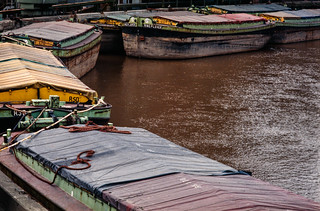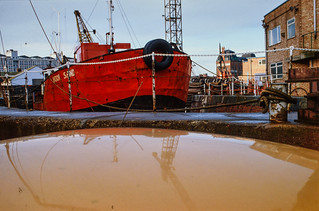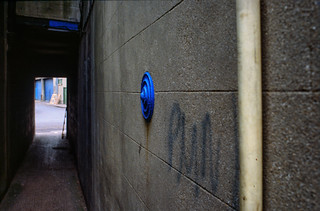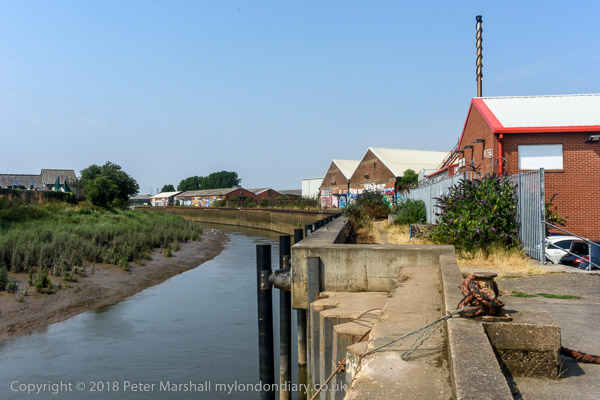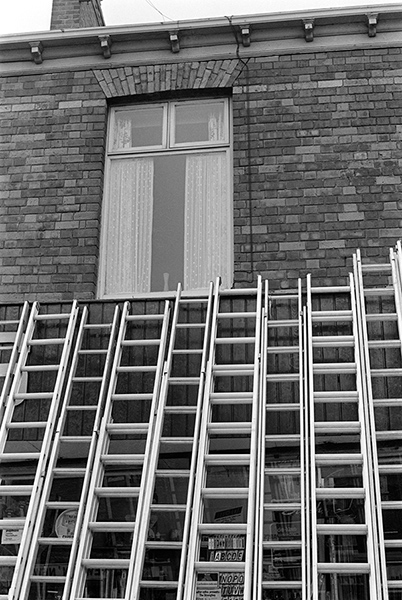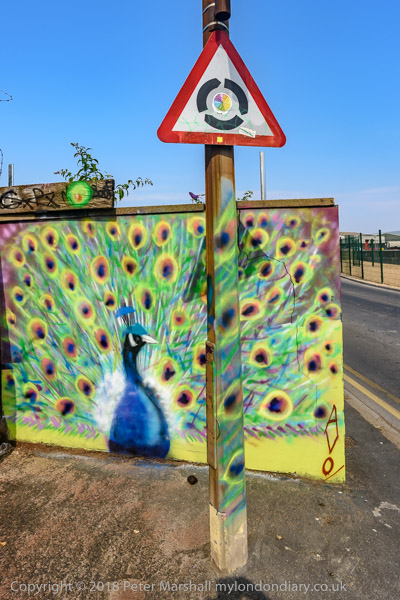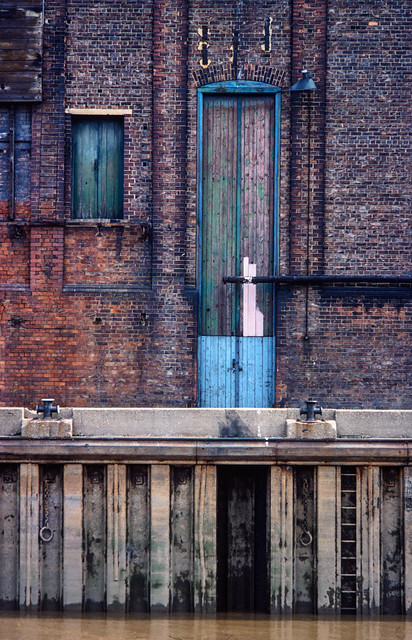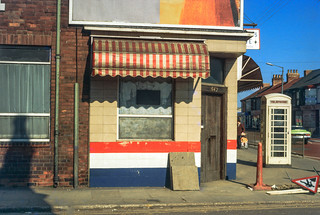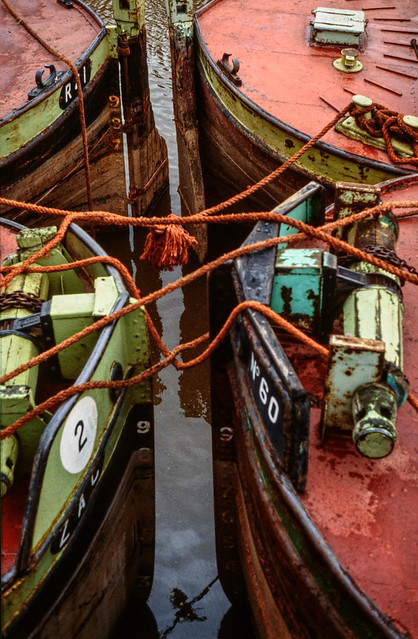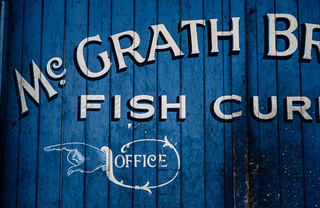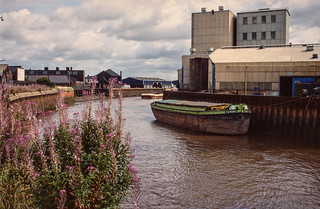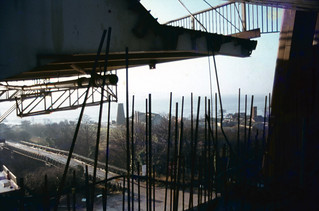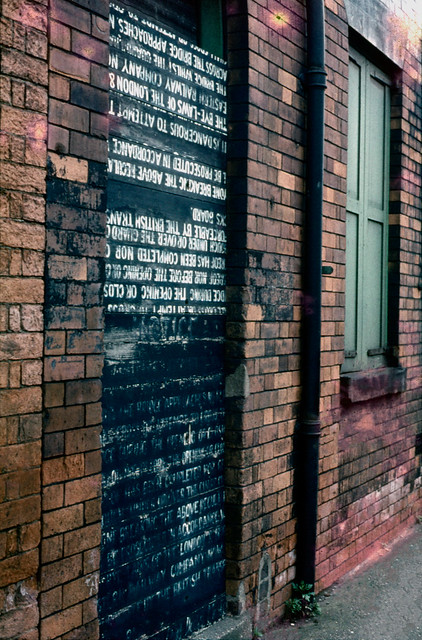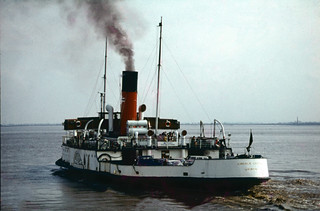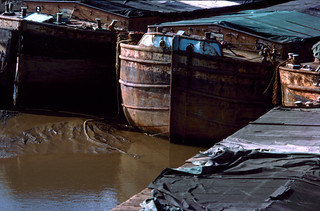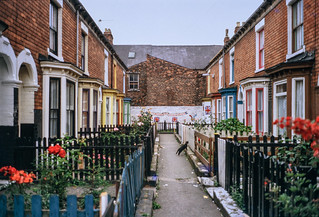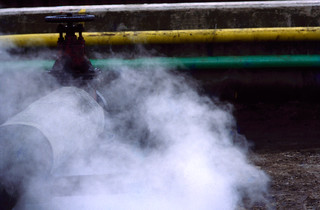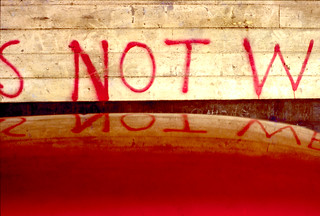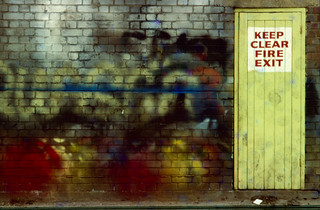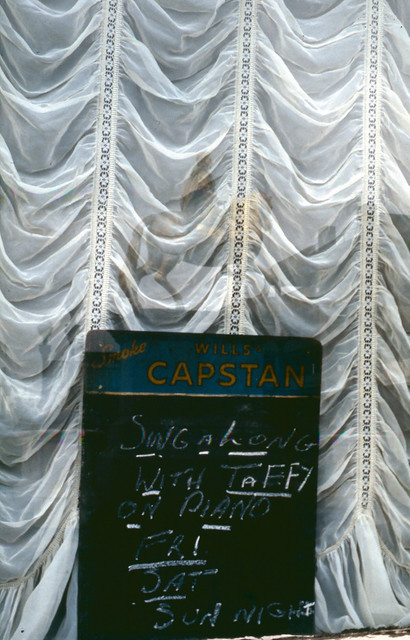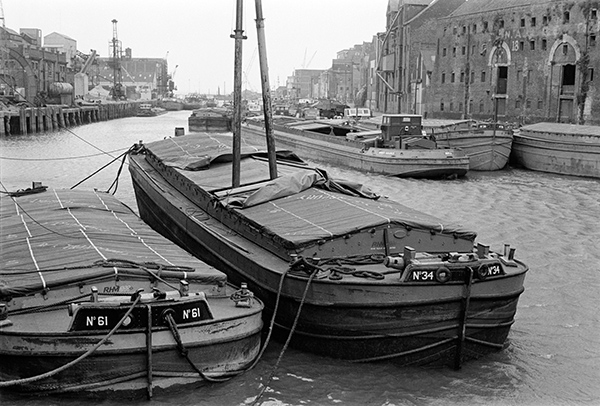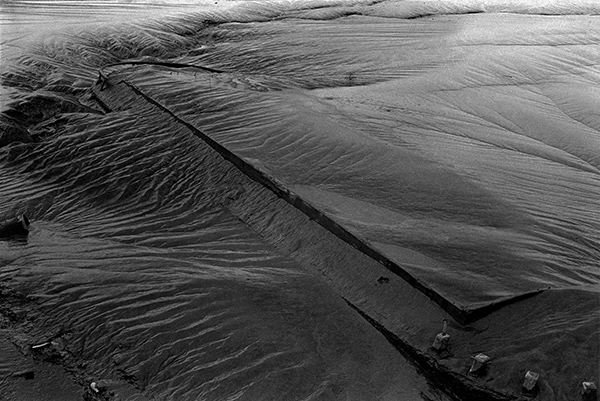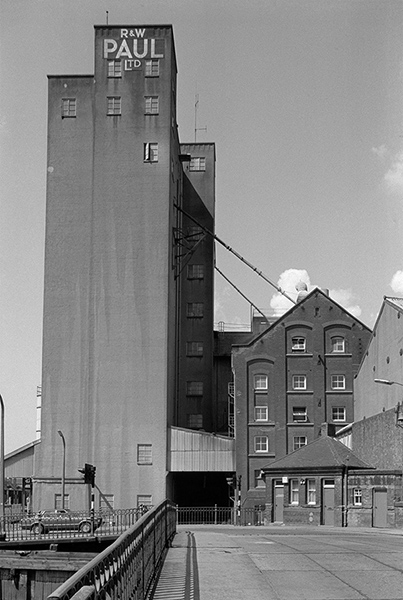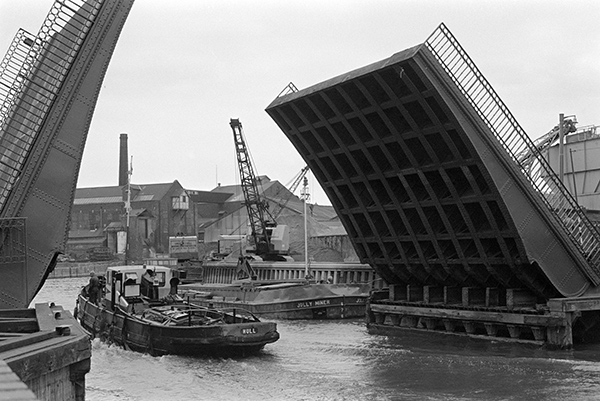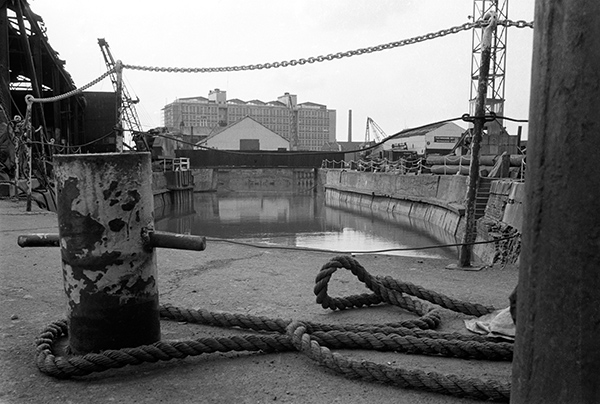More barges on the River Hull, moored around the bend just north of the Isis Oil Mills. Here’s that same bend in 2018:
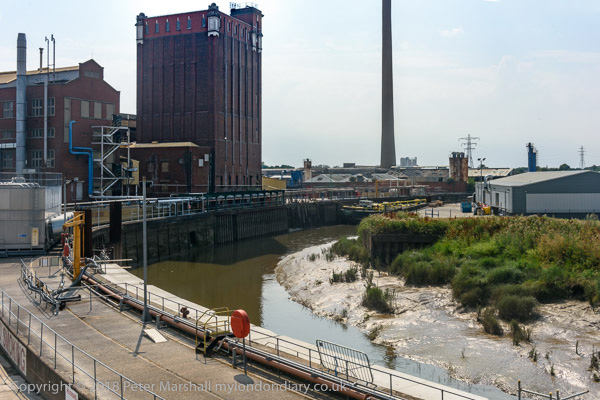
All of the barges are in the green and yellow colour scheme of Hull’s Gillyott and Scott, formed in 1964 by amalgamation of the five companies of William Gilyott, John A. Scott, T.F. Wood, Furleys and John Deheer.
Some of the barges had the names of birds – such as No 129 Ring Plover at the centre of the group above. Others had to make do with just a simple number or a letter and number such as R50 here. Perhaps it depended on which company they had come from.
This warehouse on the bank of the River Hull had its frontage on High St, immediately upstream from Drypool Bridge. The narrow passage of Blaides Staithe separates it from Blaydes House, the rear of which can be seen at the right of the picture.
Not long after I photographed it, the warehouse was demolished, its site remaining undeveloped when I last visited it 35 years later, though then said to be ‘Under Offer’. In London it would almost certainly have been preserved, probably listed and converted into luxury flats, but Hull’s low property prices signed its death warrant.
I took quite a few photographs of the Kenfig, which seemed to be moored and quietly rusting in the River Hull for several years, though I think it had previously been responsible for some of the dredging of Humber Dock for the new marina.
I wrote the following when I was commenting daily on a picture of Hull during the 2017 year as City of Culture:
The Kenfig, a grab hopper dredger built in 1954 by Henry Scarr Ltd of Hessle for the British Transport Docks Board at Port Talbot. It was one of the dredgers used to clear the passage into Humber Dock for the Marina, and in 1983 was bought by Jones & Bailey Contractors Ltd of Hull who renamed her Hedon Sand in 1984. Around 5 years later she was scrapped at New Holland.
Kenfig was moored just a little upstream of Drypool Bridge on the River Hull for most of the 1980s, seldom if ever moving.
There are still several dry docks on the lower part of the River Hull, though I think none currently in use, with one scheduled in 2023 to be the centre of a new maritime museum, where it will house Hull’s last sidewinder trawler the Arctic Corsair.
This one is on the opposite side of the river, north of Drypool Bridge and my picture is taken from its road entrance on Great Union St.
My apologies for the poor technical quality of this image, which reflects the difference between colour films and the quality we now get from digital images. I think this was probably taken on an ISO400 colour film, while with my current digital camera I would happily work at ISO6400 and get considerably superior results. Photographers will understand this is a difference of five stops. I couldn’t use a very slow shutter speed as the small tanker was moving up river at some speed with the tide.
The view here is looking towards the mouth of the River Hull. The sand and gravel works have now gone and there is a rather ugly hotel on that side of the river. Further down, past the Myton Bridge, built in 1979 and the tidal barrier, the land at Sammy’s Point is now occupied by The Deep.
More pictures at Hull Colour 1972-85 on Flickr.
All photographs on this and my other sites, unless otherwise stated, are taken by and copyright of Peter Marshall, and are available for reproduction or can be bought as prints.
